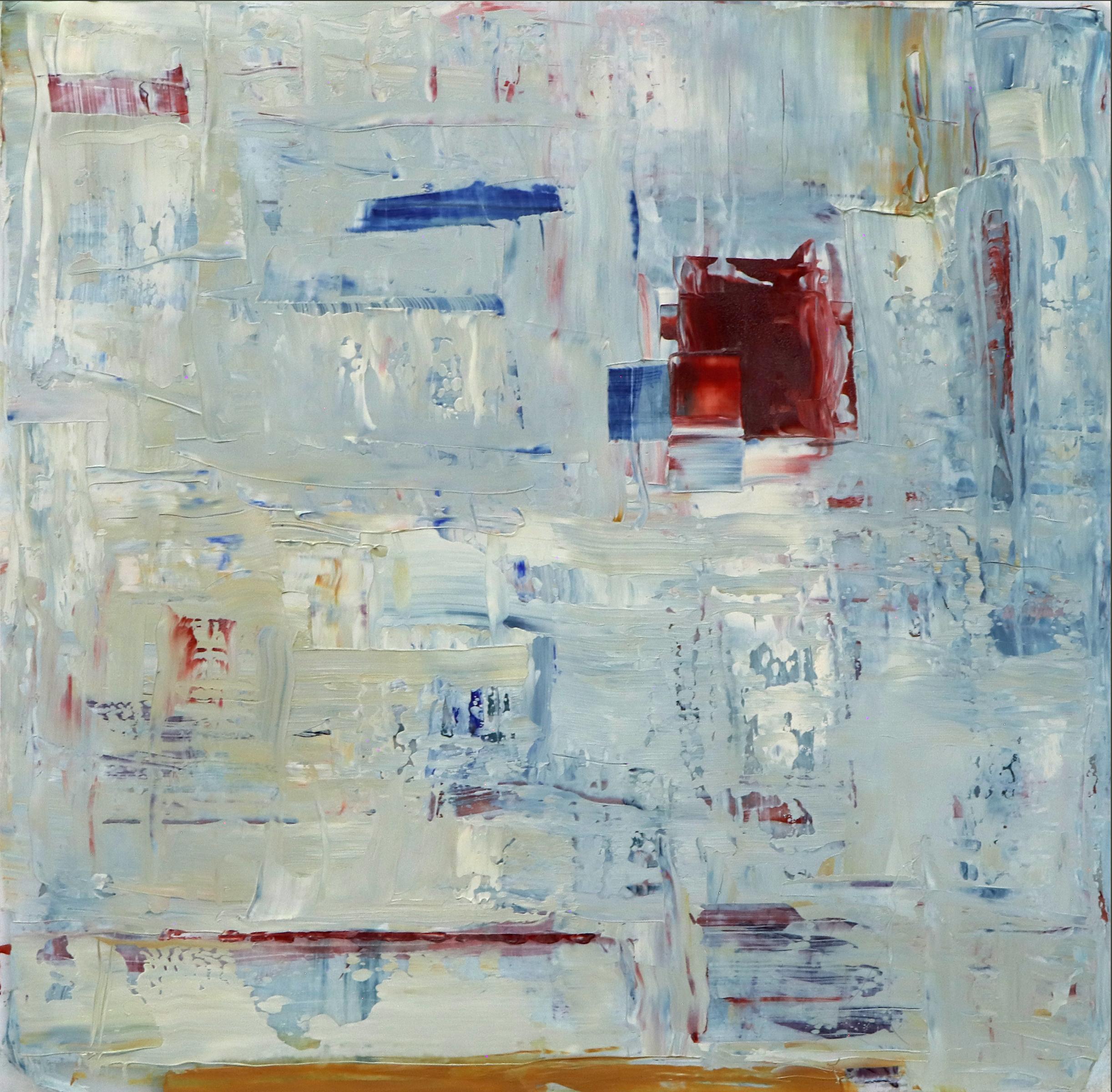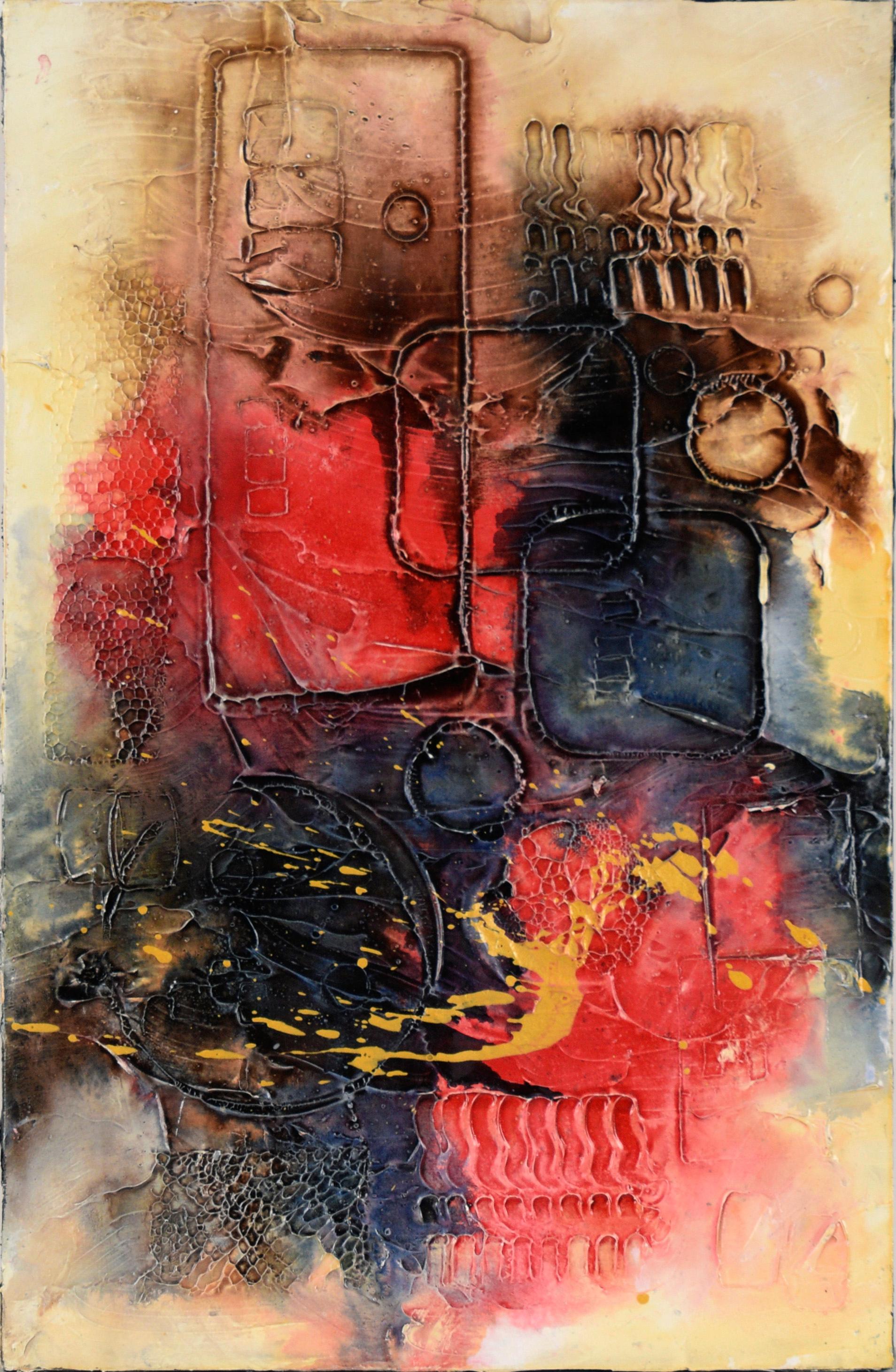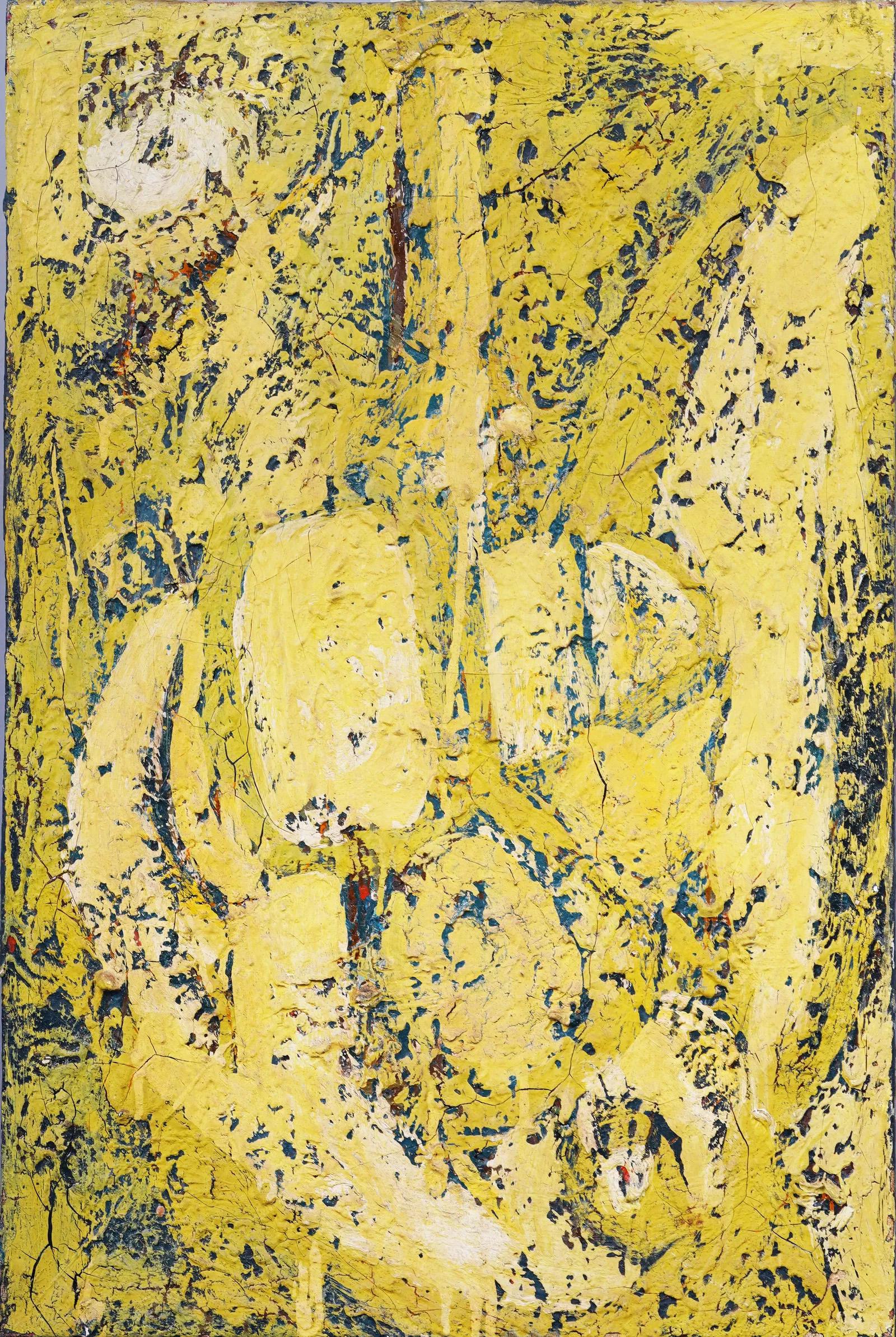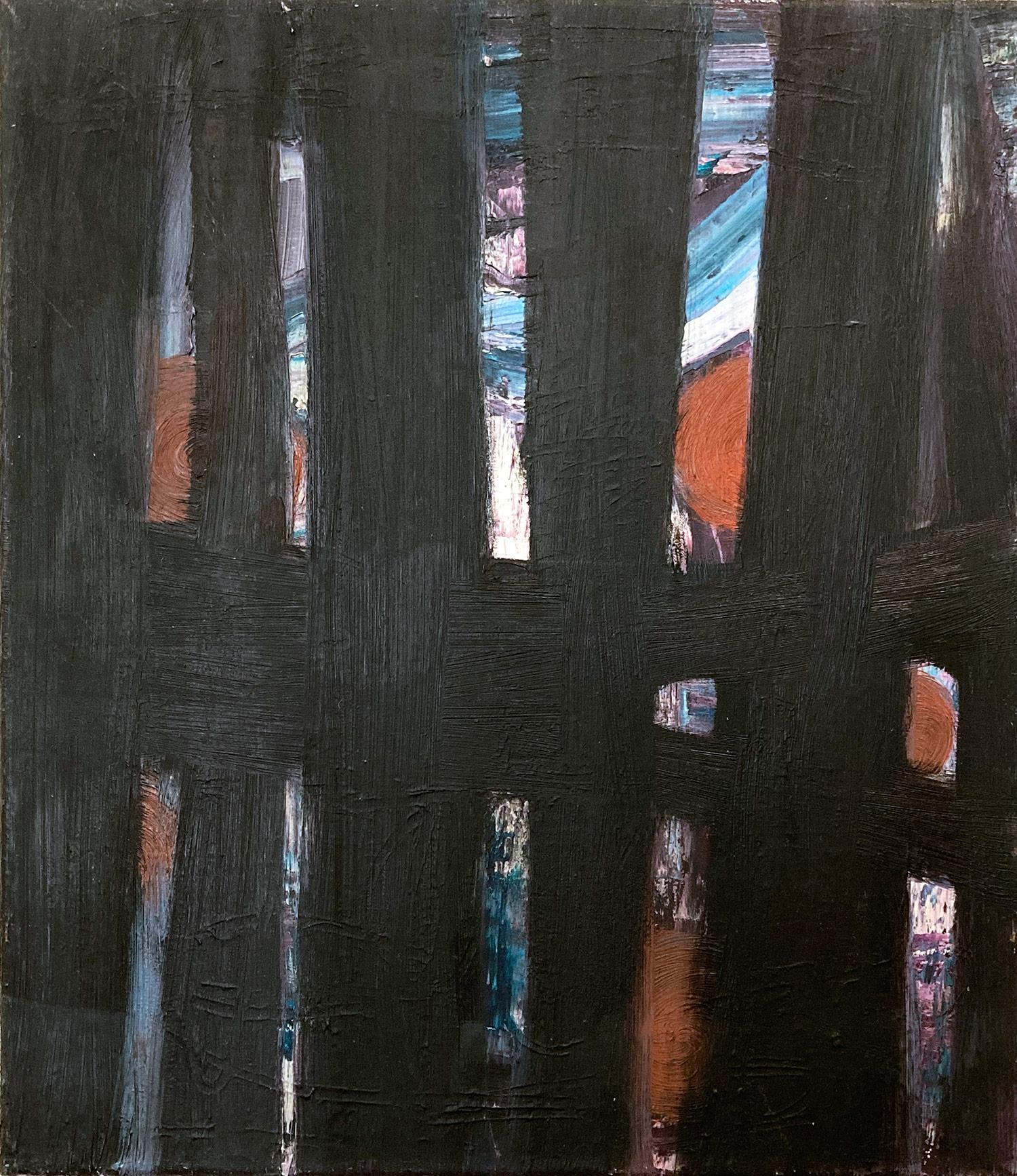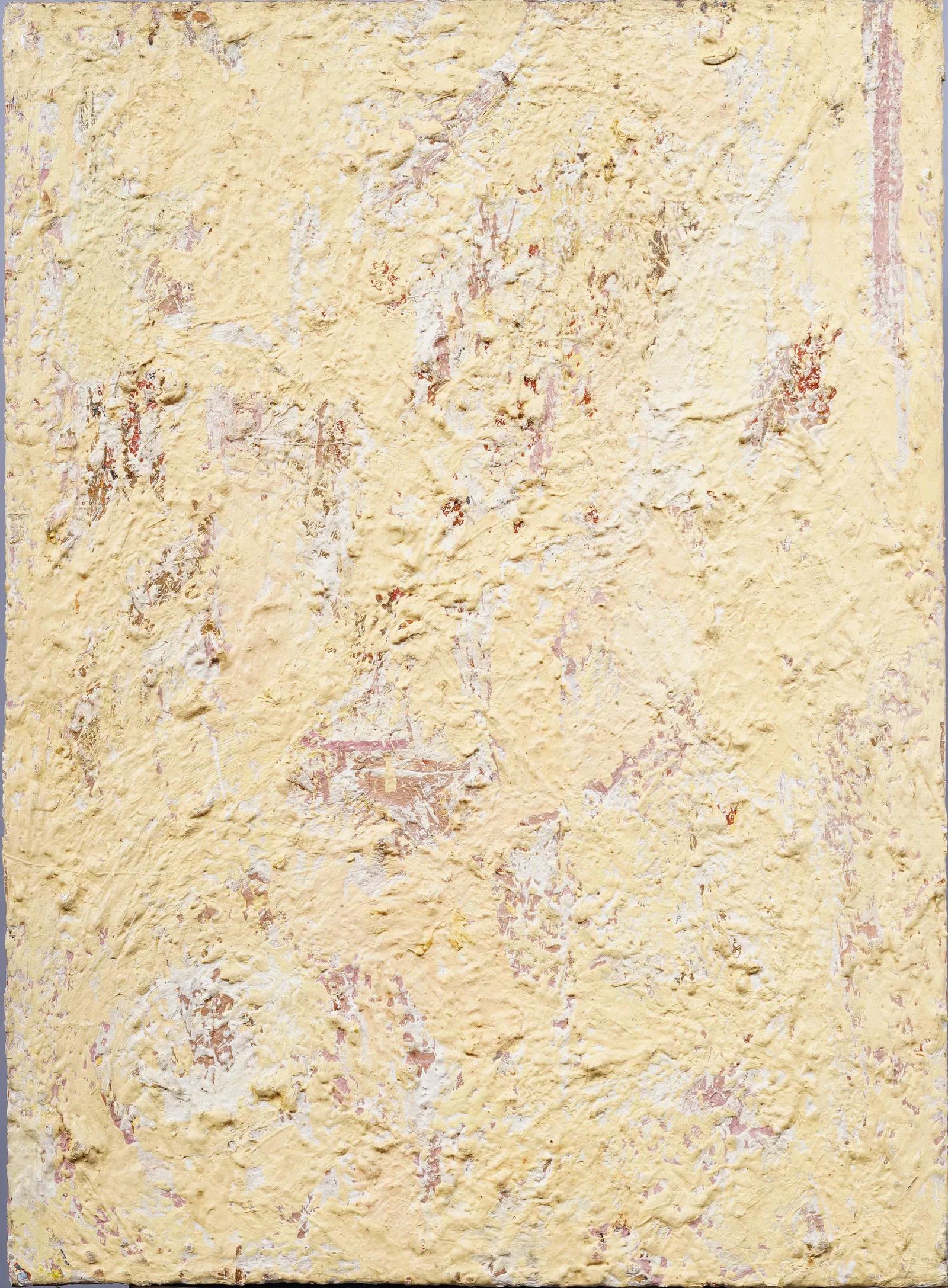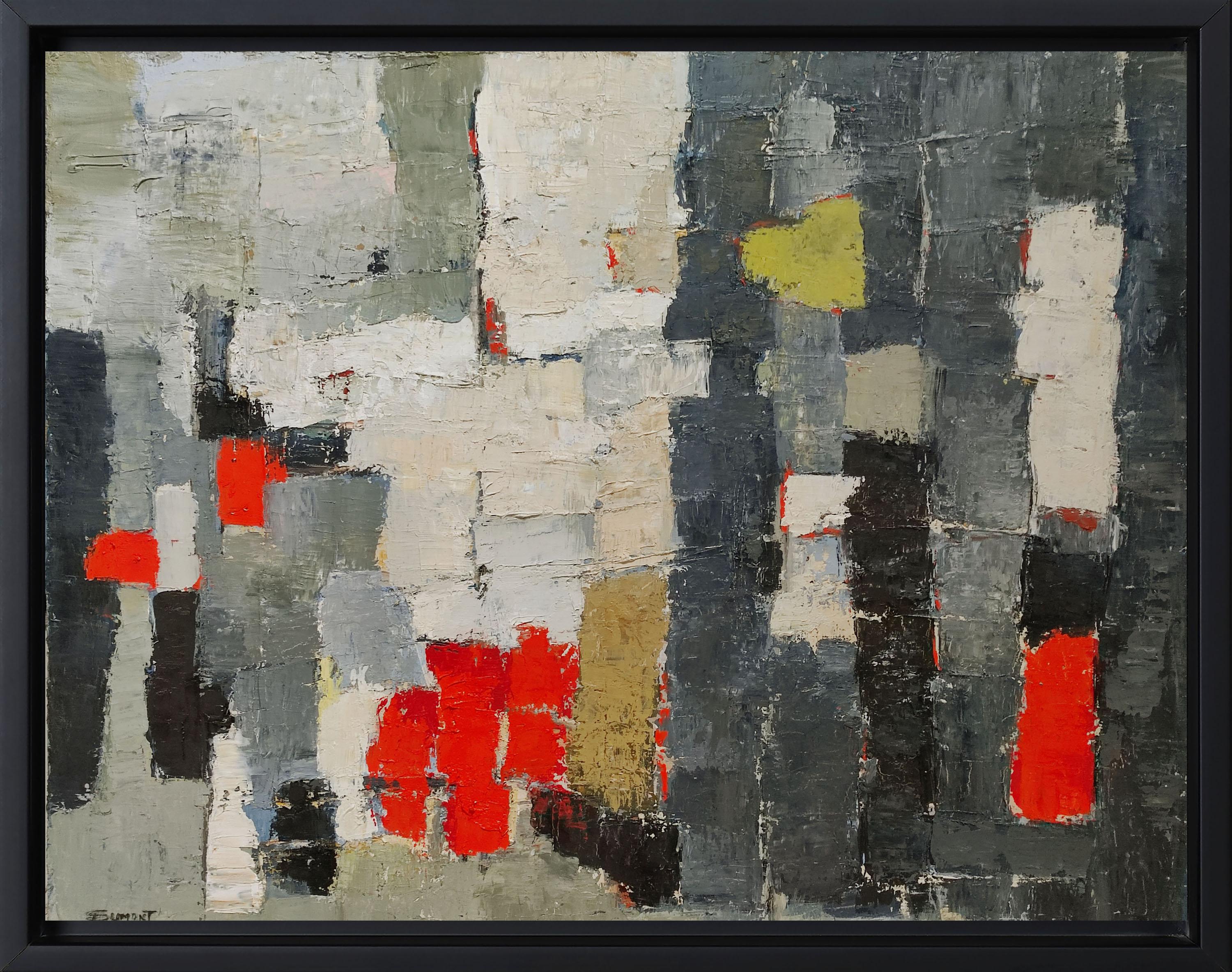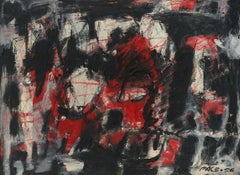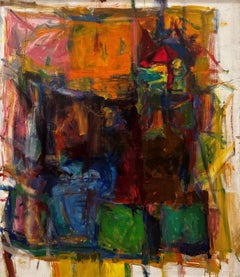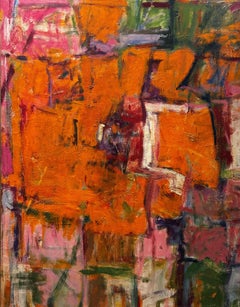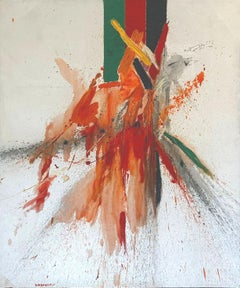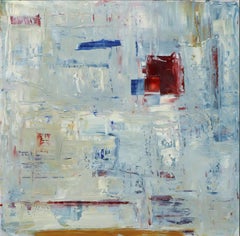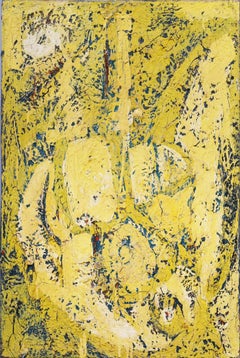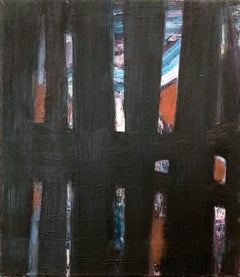Items Similar to "Byzantine" Gertrude Greene, 1955 Abstract Heavy Impasto Layered Composition
Want more images or videos?
Request additional images or videos from the seller
1 of 10
Gertrude Greene"Byzantine" Gertrude Greene, 1955 Abstract Heavy Impasto Layered Composition1955
1955
$42,000
£31,601.10
€36,509.28
CA$59,356.96
A$64,450.12
CHF 34,131.06
MX$789,973.88
NOK 422,385.26
SEK 399,131.71
DKK 272,490.25
About the Item
Gertrude Greene
Byzantine, 1955
Signed and dated lower right; signed titled and dated on verso
Oil on canvas
36 x 28 inches
A political leftist and social activist, Gertrude Greene avoided overt commentary in her art. Unlike Louis Schanker, Hananiah Harari, and others for whom art expressed societal concerns, natural forms, and structures, Greene looked to the purity of Mondrian and Russian Constructivists Antoine Pevsner, Naum Gabo, and Vladimir Tatlin for her artistic foundations.
Greene began studying sculpture at the Leonardo da Vinci School in NewYork in 1924. The curriculum at the Leonardo school paralleled the foundation classes at the National Academy of Design and other conservative art schools—students studied life drawing only after demonstrating proficiency in drawing from plaster casts. Greene's art interests carried over into the kindergarten she ran at the time; on rainy days, she took her young charges to the Brooklyn Museum where the students attempted to draw the sculpture and paintings.
In 1926, Greene, née Glass, married Balcomb Greene. The young couple soon left for Vienna where Balcomb pursued graduate work in psychology. After a year abroad, they returned to New York via Paris, and in 1928, Balcomb accepted a teaching position at Dartmouth College in New Hampshire. During their three years in New Hampshire, the Greenes visited New York often. They frequented Gallatin's Gallery of Living Art and the newly opened Museum of Modern Art. This whetted Greene's appetite to see more vanguard art, and by late 1931, the couple had saved enough money to return to Paris.
Paris in the late 1920s and early 1930s offered remarkable opportunities for young artists seeking the avant-garde. Not only was the city the center for Cubism and Surrealism, but, with the formation of Abstraction-Création, Art Nonfiguratif, Constructivism was very much in evidence. The goal of this group, wrote sculptor Naum Gabo in the first issue of the eponymous publication, was the "cultivation of pure plastic art, to the exclusion of all explanatory, anecdotal, literary and naturalistic elements."
Greene, especially, became fascinated with the Constructivists, ideas about unifying art and politics—thoughts that grew out of their belief that when "purified," art would show the way for reordering society along higher planes. Even more than the theory, however, Greene was impressed with Pevsner's and Gabo's art, and began doing Constructivist drawings. After the Greenes returned to New York, Gertrude became active in leftist artists' organizations. She helped establish the Unemployed Artists' Group that was formed to lobby for federal support for unemployed painters, sculptors, and printmakers.
Throughout the 1930s, Greene's art progressed almost systematically toward geometrical purity. By 1935, the year the Museum of Modern Art presented excellent examples of work by Malevich, El Lissitzky, Rodchenko, Tatlin, and Pevsner in an exhibition entitled Cubism and Abstract Art, she herself had begun making constructions. Initially indicative of herappreciation for Jean Arp's work, Greene'sconstructions over the next two years moved between biomorphic and geometric abstraction. Increasingly, however, she began merging the two types of forms—one associated with Surrealism, the other with Constructivism—and after about 1940, a simple, geometric approach akin to Neo-plasticism and Constructivism predominated. As studies for these works, she began making paper collages that explored the merging of biomorphic and geometric form and experimented with layering as a spatial device.
In her last constructions, such as Construction 1946, Greene began adding gestural areas of color. Although among her strongest and most original accomplishments, she put aside her relief constructions in favor of painting. Initially geometric, her paintings by the early 1950s became increasingly expressionistic. Her solo exhibitions, in 1951 and 1955, the first of her career, included only the late, gestural canvases.
In 1937, when the American Abstract Artists was formed, Greene was its first paid employee. She tended the desk at the Squibb Gallery exhibition in 1937, passing out questionnaires and answering the queries and jibes about the art that was featured in the first annual show. Her own work was also shown that year in the opening exhibition of the Museum of Non-Objective Painting.
Although she resigned her membership in the American Abstract Artists in 1942, only five years after the first exhibition, Greene did so in the belief that the group's mission had been largely accomplished. She had figured prominently in the group's programs and in promoting the purist point of view in arguments over the role of nature versus geometric purity in abstract art.
- Creator:Gertrude Greene (1911-1956, American)
- Creation Year:1955
- Dimensions:Height: 36 in (91.44 cm)Width: 28 in (71.12 cm)
- More Editions & Sizes:Unique WorkPrice: $42,000
- Medium:
- Movement & Style:
- Period:
- Condition:
- Gallery Location:New York, NY
- Reference Number:1stDibs: LU1841215802742
About the Seller
5.0
Platinum Seller
Premium sellers with a 4.7+ rating and 24-hour response times
Established in 2022
1stDibs seller since 2022
122 sales on 1stDibs
Typical response time: <1 hour
- ShippingRetrieving quote...Shipping from: New York, NY
- Return Policy
Authenticity Guarantee
In the unlikely event there’s an issue with an item’s authenticity, contact us within 1 year for a full refund. DetailsMoney-Back Guarantee
If your item is not as described, is damaged in transit, or does not arrive, contact us within 7 days for a full refund. Details24-Hour Cancellation
You have a 24-hour grace period in which to reconsider your purchase, with no questions asked.Vetted Professional Sellers
Our world-class sellers must adhere to strict standards for service and quality, maintaining the integrity of our listings.Price-Match Guarantee
If you find that a seller listed the same item for a lower price elsewhere, we’ll match it.Trusted Global Delivery
Our best-in-class carrier network provides specialized shipping options worldwide, including custom delivery.More From This Seller
View All"Untitled, 56-21" Stephen Pace, Pulsating Forms, Abstract Expressionist Painting
By Stephen Pace
Located in New York, NY
Stephen Pace
Untitled, 56-21, 1956
Signed and dated lower right
Oil on canvas
22 x 30 inches
Born in Charleston, Missouri, Stephen Pace grew up in Indiana, where his parents operat...
Category
1950s Abstract Expressionist Abstract Paintings
Materials
Canvas, Oil
"Thelo #8" Diana Kurz, circa 1959 Abstract Expressionist Large Oil Painting
By Diana Kurz
Located in New York, NY
Diana Kurz
Thelo #8, circa 1959
Signed lower left
Signature and address on verso
Oil on canvas
47 x 41 inches
Diana Kurz (born 1936) is an Austrian-born feminist painter. In 1938, ...
Category
1950s Abstract Expressionist Abstract Paintings
Materials
Canvas, Oil
"OP #7" Diana Kurz, 1960-1961 Abstract Expressionist Vibrant Color Painting
By Diana Kurz
Located in New York, NY
Diana Kurz
OP #7, 1960-61
Signed, titled, dated on verso
Oil on canvas
66 x 52 1/2 inches
Diana Kurz (born 1936) is an Austrian-born feminist painter. In 1938, Diana Kurz's family ...
Category
1960s Abstract Expressionist Abstract Paintings
Materials
Canvas, Oil
"Jenny Song" Janey Washburn, 1961 Abstract Expressionist Large Gestural Painting
Located in New York, NY
Janey Washburn
Jenny Song, 1961
Signed lower left
Oil on canvas
72 x 60 inches
Janey Washburn was an abstract expressionist painter working in New York City. Her self portrait was i...
Category
1960s Abstract Expressionist Abstract Paintings
Materials
Canvas, Oil
"Untitled" Steven Pace, Second Generation Abstract Expressionist Painting
By Stephen Pace
Located in New York, NY
Stephen Pace
Untitled, 58-06, 1958
Oil on canvas
54 x 41 inches
Born in Charleston, Missouri, Stephen Pace grew up in Indiana, where his parents operated a grocery store and then a...
Category
1950s Abstract Expressionist Abstract Paintings
Materials
Canvas, Oil
"Clifford" Diana Kurz, 1961 Abstract Expressionist New York School Female Artist
By Diana Kurz
Located in New York, NY
Diana Kurz
Clifford, 1961
Signed and titled on verso
Oil on canvas
55 x 50 inches
Diana Kurz (born 1936) is an Austrian-born feminist painter. In 1938, Diana Kurz's family fled Aus...
Category
1960s Abstract Expressionist Abstract Paintings
Materials
Canvas, Oil
You May Also Like
Original Impasto Abstract Mid-Century Modern Oil Painting, Framed Blue & Red Art
Located in Denver, CO
Experience the bold elegance of Wilma Fiori's original abstract oil painting, a striking composition by the renowned Denver artist (1929-2019). This mid-century modern masterpiece fe...
Category
Mid-20th Century Abstract Expressionist Abstract Paintings
Materials
Oil
Textured Abstract Expressionist Composition (I) in Acrylic on Board
Located in Soquel, CA
Textured Abstract Expressionist Composition in Acrylic on Board
Textured and detailed abstract composition by Loretta Burton Youngman (American, b. 1943). Red and charcoal blue patc...
Category
21st Century and Contemporary Abstract Expressionist Abstract Paintings
Materials
Plaster, Glaze, Acrylic
Antique Ukrainian American Abstract Expressionist Thick Impasto Oil Painting
Located in Buffalo, NY
Ukrainian American abstract painting by Misha Reznikoff (1905 - 1971). Oil on canvas. Signed verso in monogram. Measuring 20.5 by 30.5 inches.
Category
1960s Abstract Abstract Paintings
Materials
Canvas, Oil
"Linear Composition" Greek Abstract Expressionist Oil Painting on Canvas
By Eozen Agopian
Located in New York, NY
This piece is a bold display of Eozen Agopian's structurally strong pieces, with an intense color of Black and pops of blue, red and white, mimicking fee...
Category
Early 2000s Abstract Expressionist Abstract Paintings
Materials
Canvas, Oil
Antique Ukrainian American Abstract Expressionist Thick Impasto Oil Painting
Located in Buffalo, NY
Ukrainian American abstract painting by Misha Reznikoff (1905 - 1971). Oil on canvas. Signed verso in monogram. Measuring 20.5 by 30.5 inches.
Category
1960s Abstract Abstract Paintings
Materials
Canvas, Oil
Dynamic, Abstract painting, Oil on canvas, Expressionism, Textured, French Art
By SOPHIE DUMONT
Located in LANGRUNE-SUR-MER, FR
Sophie DUMONT's abstract is not a concept, it is an approach where each canvas is built around graphics put into perspective by color.
The drawing can recall the shape of a body or ...
Category
21st Century and Contemporary Abstract Expressionist Abstract Paintings
Materials
Oil
